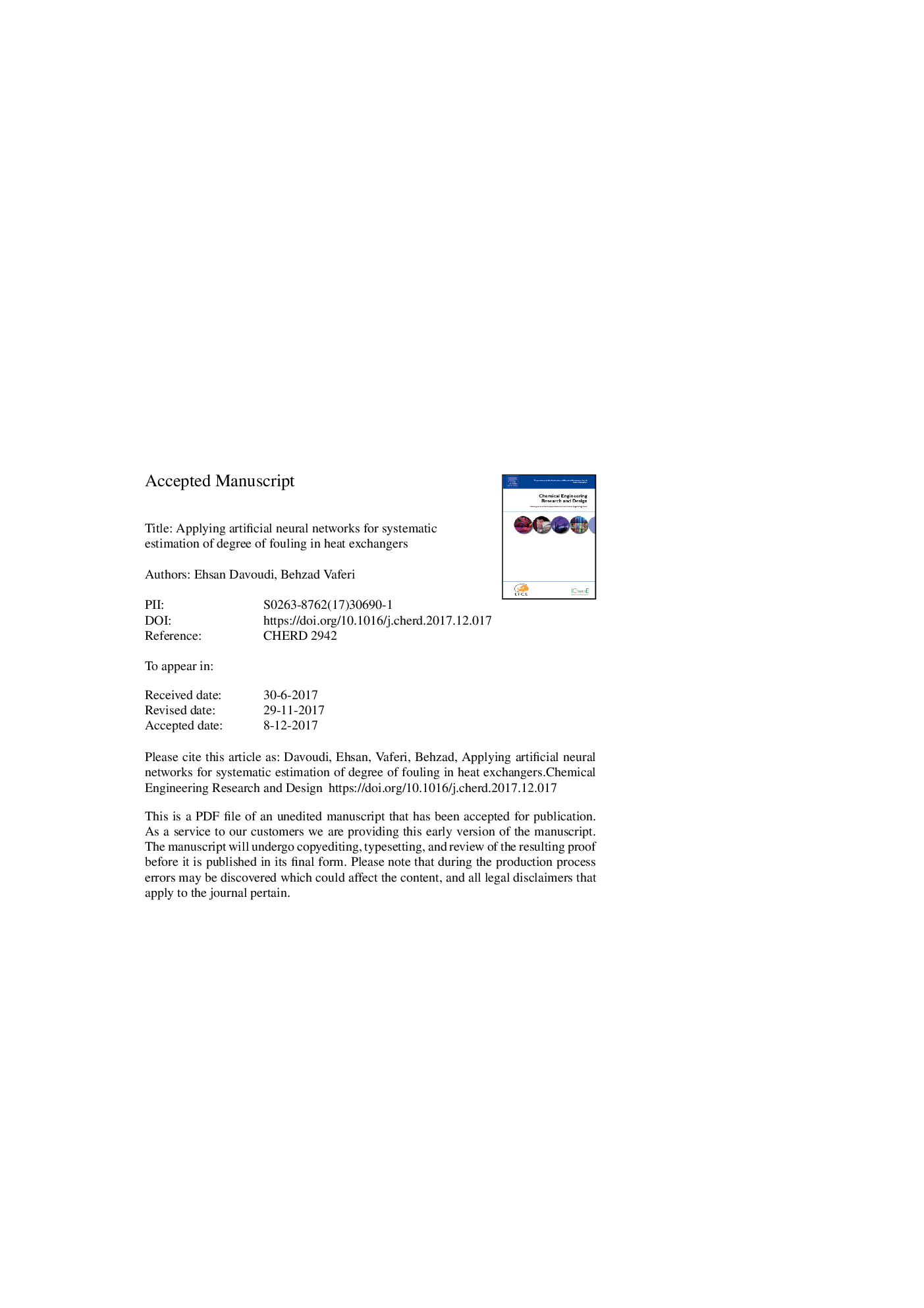| Article ID | Journal | Published Year | Pages | File Type |
|---|---|---|---|---|
| 7006143 | Chemical Engineering Research and Design | 2018 | 56 Pages |
Abstract
The ANN model was developed and validated using a huge databank including 11,626 experimental datasets for fouling factor in portable fouling research unit (PFRU) and single tube heat exchangers collecting from six different literatures. The best training algorithm and the optimum numbers of hidden neuron were determined through minimizing the computational effort and maximizing some statistical accuracy indices, respectively. It was concluded that Bayesian regulation backpropagation approach has the best performance among the considered training algorithms. Moreover, the two-layer perceptron neural network with ten hidden neurons was found as the best ANN topology. This ANN model predicts the experimental values of fouling factor with overall AARD%Â =Â 5.42, MSEÂ =Â 0.0013, RMSEÂ =Â 0.0355, and R2Â =Â 0.977819. The simplicity of the developed ANN model and its small levels of error for huge experimental databank are some of the key features of our model.
Keywords
HTRIANNMRERBFRMSECFBPCCMLPAACMSENARXdissolved oxygenGeneralized regressionRoot mean square errorHourArtificial Neural Networkartificial neural networksPearson correlation coefficientAARDFouling factorRadial basis functionHeat exchangermean relative errorMean Square Errorartificial intelligenceMulti-Layer Perceptron
Related Topics
Physical Sciences and Engineering
Chemical Engineering
Filtration and Separation
Authors
Ehsan Davoudi, Behzad Vaferi,
